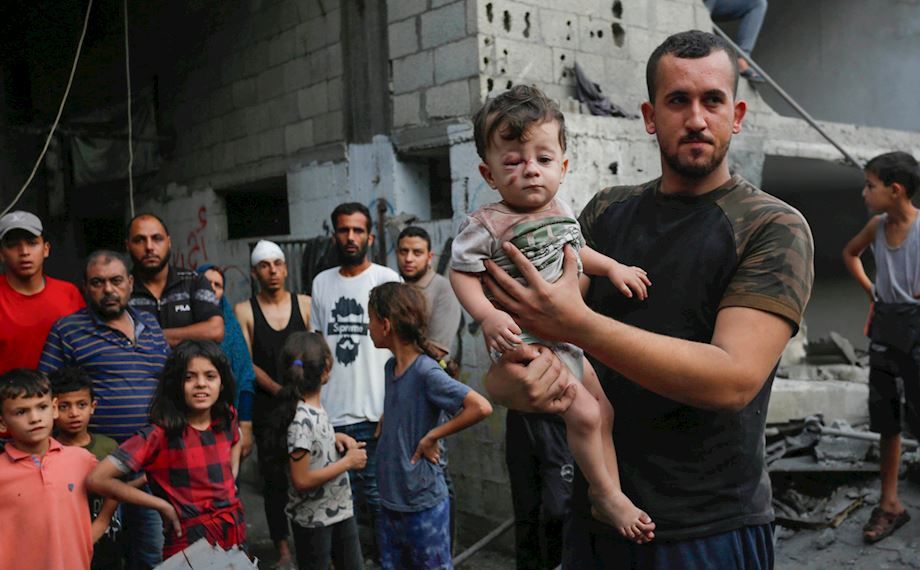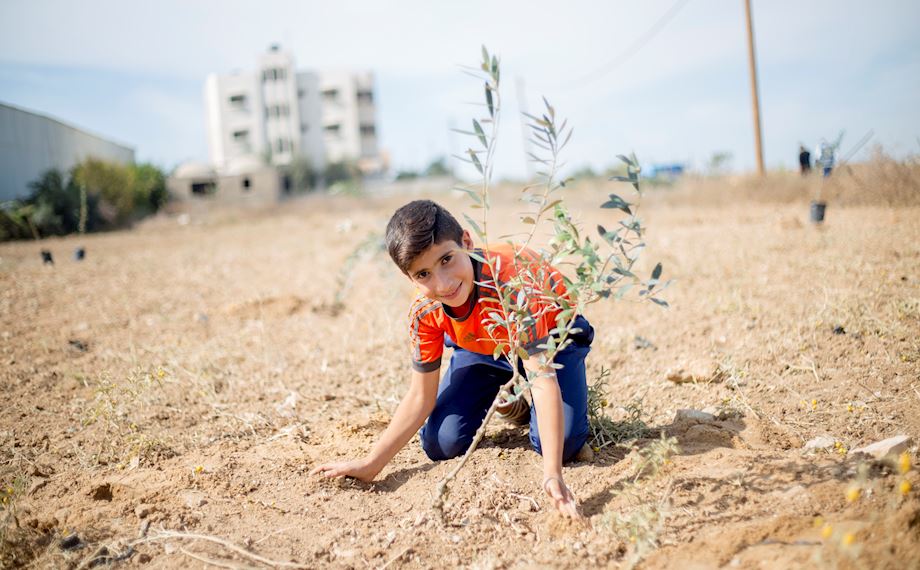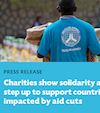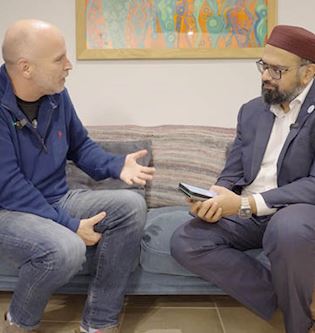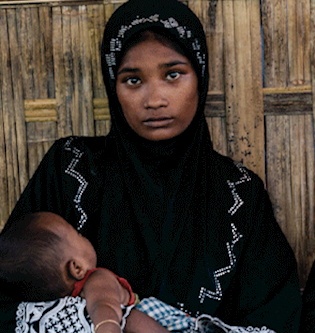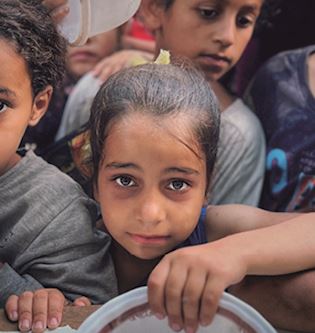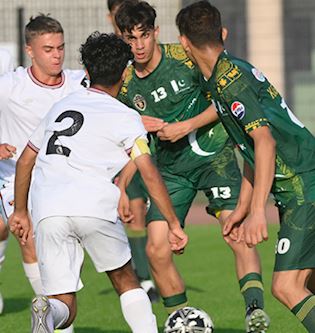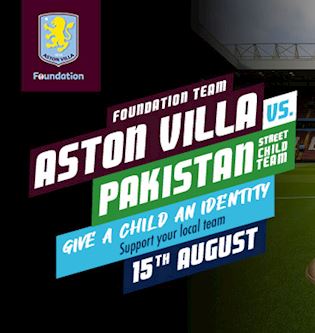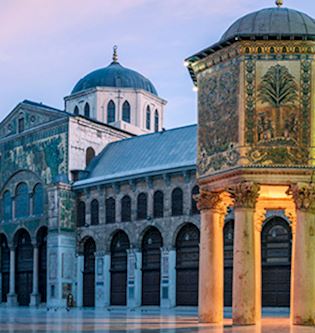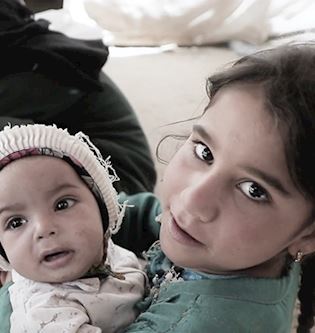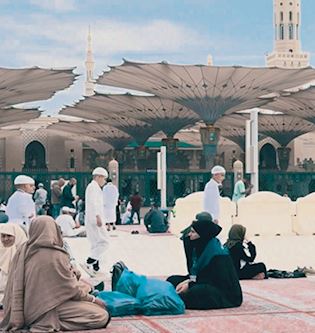Explained: A Humanitarian Overview of the Gaza Strip

The latest military assault on Gaza is being followed worldwide. The scenes of escalating violence have led to international protests in cities from London to Michigan and condemnation from academics, political figures, human rights groups and social media users. There have been hundreds of deaths and injuries across Palestine and thousands of people have been displaced by the violence.
In Gaza, the recent crisis is worsening an already precarious humanitarian situation. This article will give an overview of the situation in Gaza before the bombardment, including facts about food insecurity, water scarcity, mass unemployment, power outages and lack of healthcare. We will then discuss the latest crisis, our own intervention, and how you can help us raise awareness while supporting Gazans with Zakat and Sadaqah.
1. An overview of the Gaza Strip
The Gaza Strip is 41km long and 10km wide. This small strip of land is home to over 1.9 million people, around 1.4 million of whom are refugees who have been displaced from elsewhere in Palestine. Of these, 600,000 live in the eight recognised refugee camps in Gaza, which have some of the highest population densities in the world. [UNRWA]
The Gaza Strip has been described as 'the world's largest open-air prison' [UN]. It has been under blockade for 15 years now, which not only restricts the freedom of movement of almost two million people, it has also increased poverty dramatically.
Poverty rates jumped from 40% in 2005 to 56% in 2020 [Euro-Med Monitor] - and that was before the coronavirus pandemic hit.
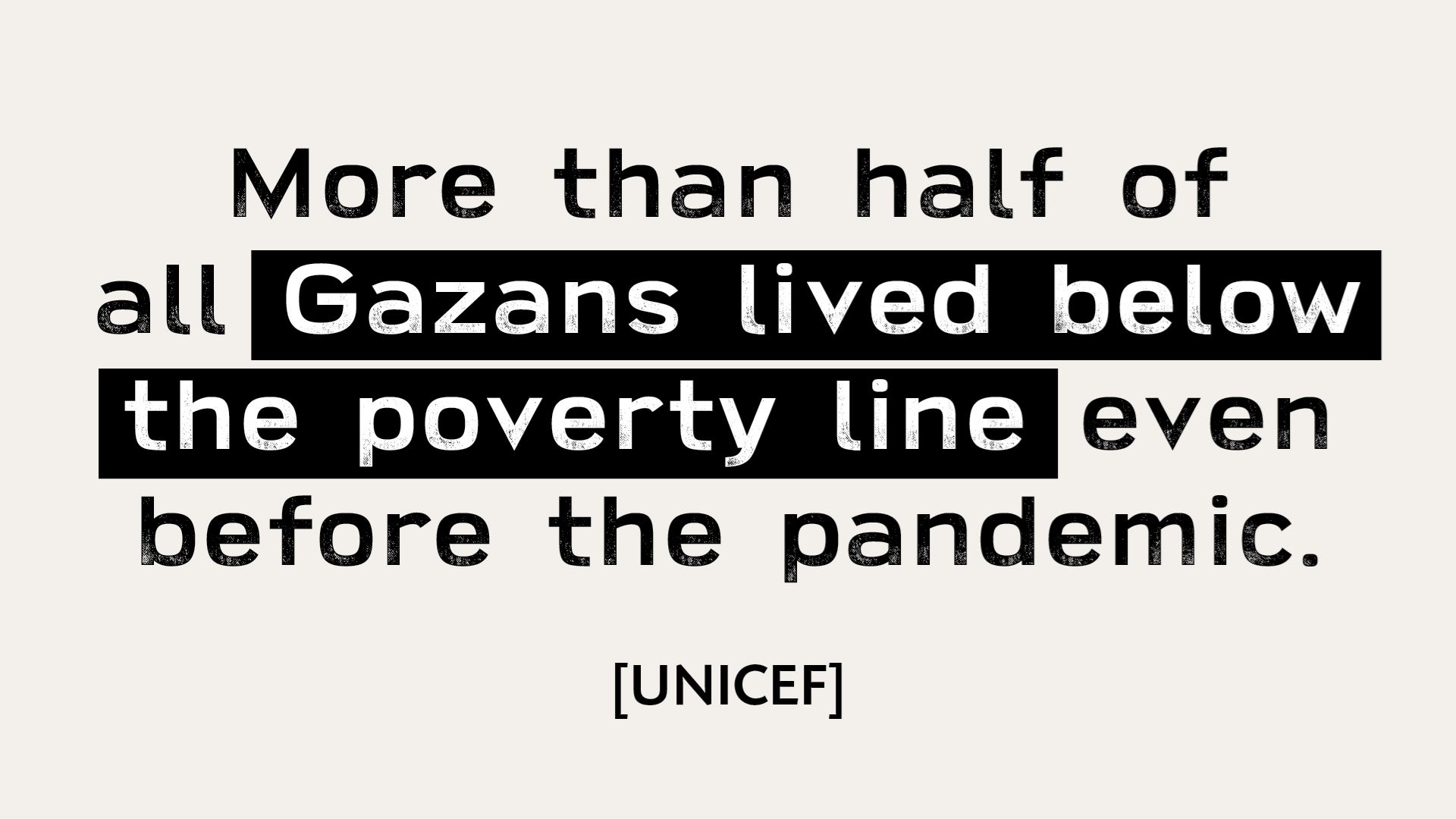
Consequently, widespread poverty combined with lack of infrastructure have left 80% of Gazans dependent on international assistance. [UNRWA]
2. Economy and unemployment
The ongoing blockade continues to have a devastating effect on Gaza's economy, leading to widespread unemployment in a highly-skilled and well-educated society. According to the World Bank, Gaza has one of the highest unemployment rates in the world - over 50% even before the coronavirus pandemic hit [UNRWA].
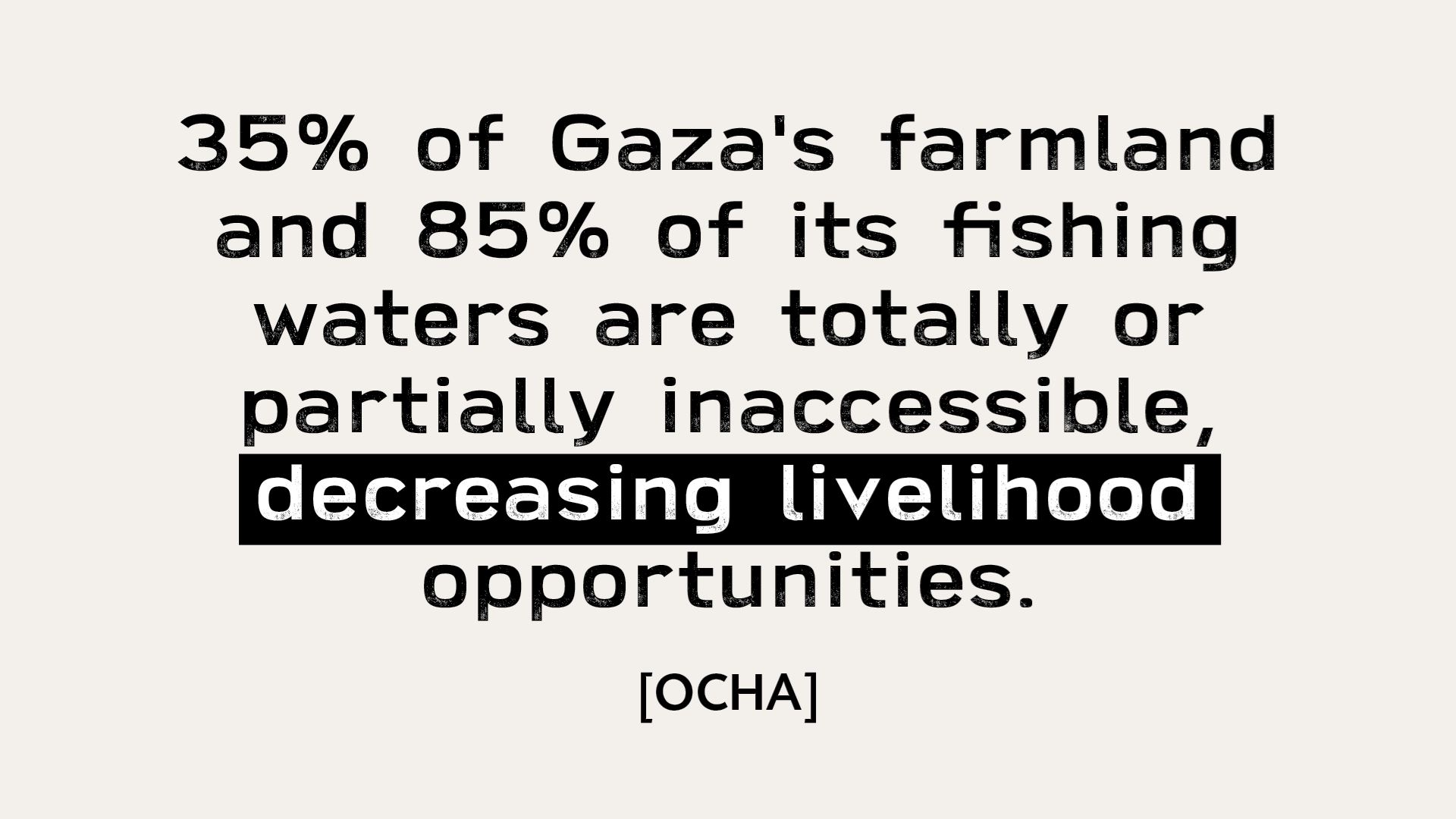
It is therefore unsurprising that over half of Gazans are living in poverty - the economy doesn't have the capacity to provide them with the jobs they need to provide for themselves. Meanwhile, the pandemic is impacting those who are already economically vulnerable: women-headed households, the elderly and disabled people. There has been a massive loss of jobs due to closures and lockdown, leading the UN to describe 2020 as 'a year of setbacks' for Palestinians due to 'an unprecedented fiscal crisis'. [UNRWA]
At the end of 2020, UNTCAD reported that Gaza's economy was 'on the verge of collapse':
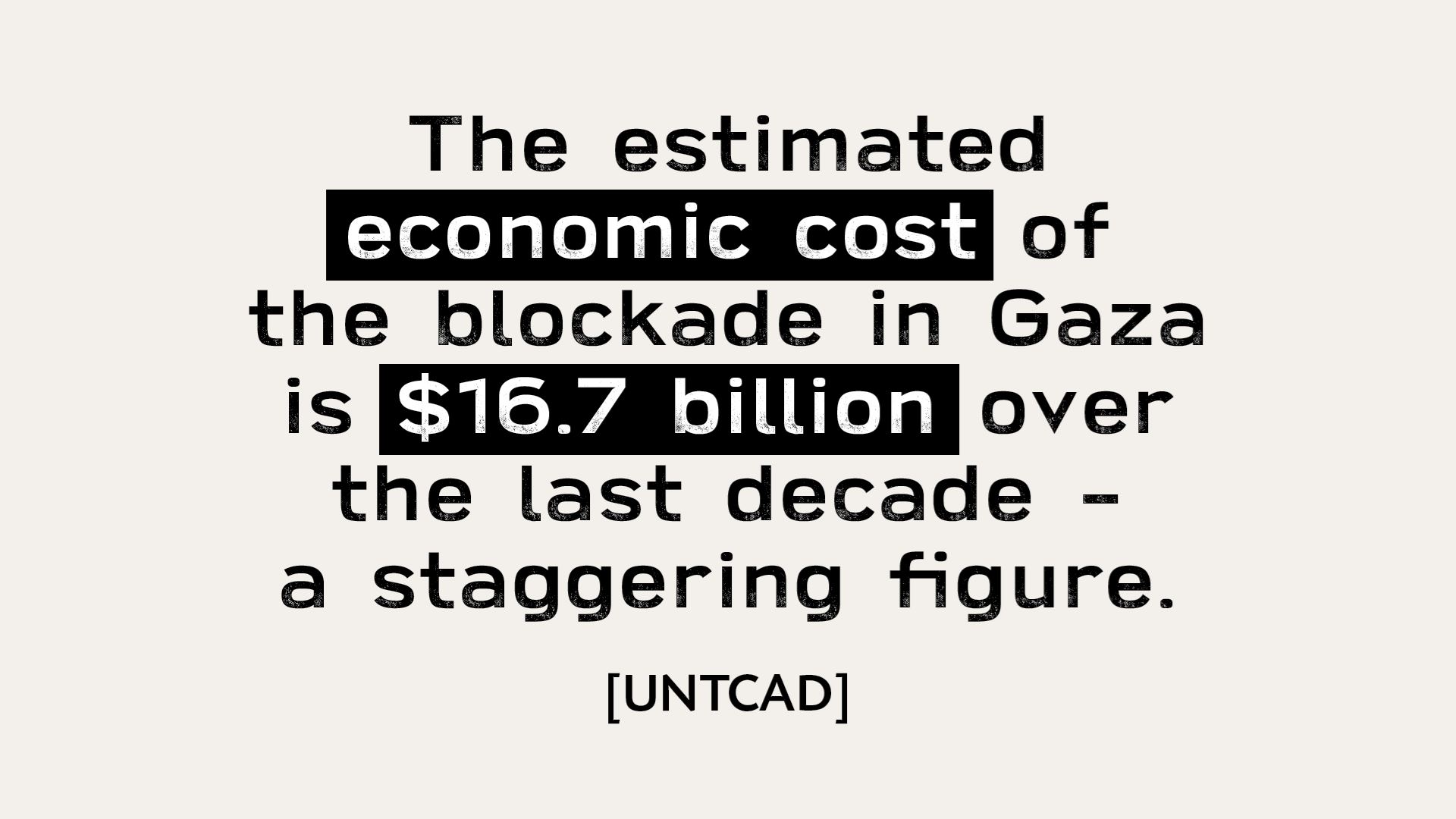
3. Food insecurity and water scarcity
Given the economic crisis and high unemployment rates, it is unsurprising that many people struggle to afford food and water. Yet the sheer level of need is shocking:
- Over 68% of Gazans are food insecure [OCHA]. That means 7 out of every 10 people you meet in Gaza is struggling to put food on the table. This figure is pre-pandemic, but the WFP estimates that food insecurity has increased across Palestine since March 2020.
- Clean water is unavailable to 95% of the population in Gaza [UNRWA]. That means that, right now, almost all Gazans lack access to safe, piped water.
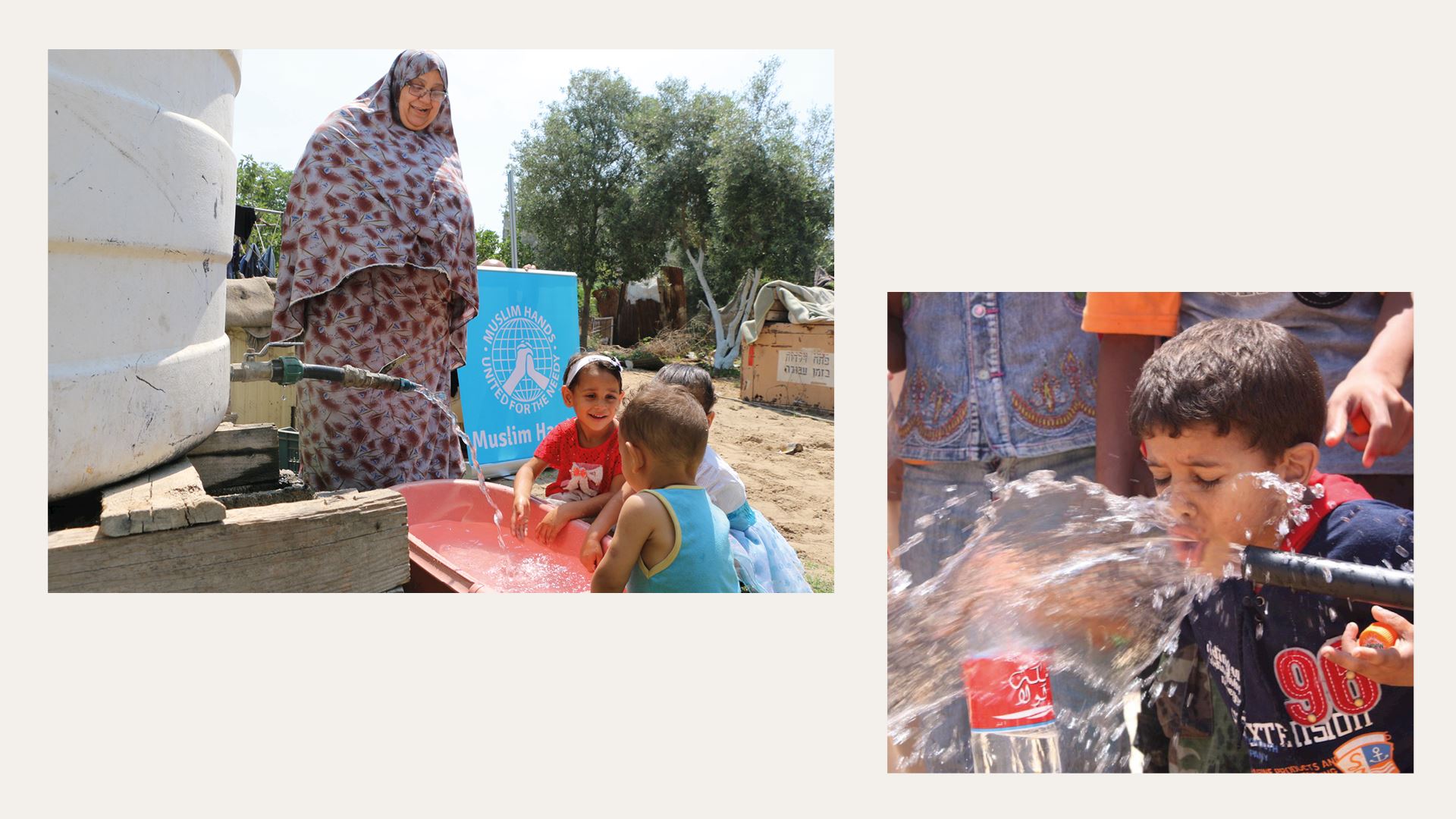
The lack of water is impacted both by lack of rain and lack of electricity. Constructing solar-powered wells (as pictured above) would help solve this problem, but of course, Gazans themselves cannot afford to do so.
Meanwhile, the lack of food is impacted by lack of opportunities to farm or fish, both of which would provide Gazans with sustainable food sources. Therefore, Gaza is reliant on international humanitarian assistance for the basic rights of food and clean water.
4. Electricity and power outages
For years, Gaza has suffered from lack of electricity, which only improved recently. In 2018, only 4-5 hours of electricity were available per day; this rose in 2019 to 12 hours of electricity per day [UNRWA]. Power cuts are still an everyday occurrence in Gaza, which not only affects individual households, it has also severely impacted infrastructure and essential services.
The health, water and sanitation services are particularly vulnerable. As seen above, clean, piped water is unavailable to most of the population. Moreover, 50-80 million litres of partially treated sewage are dumped in the sea each day. [OCHA]
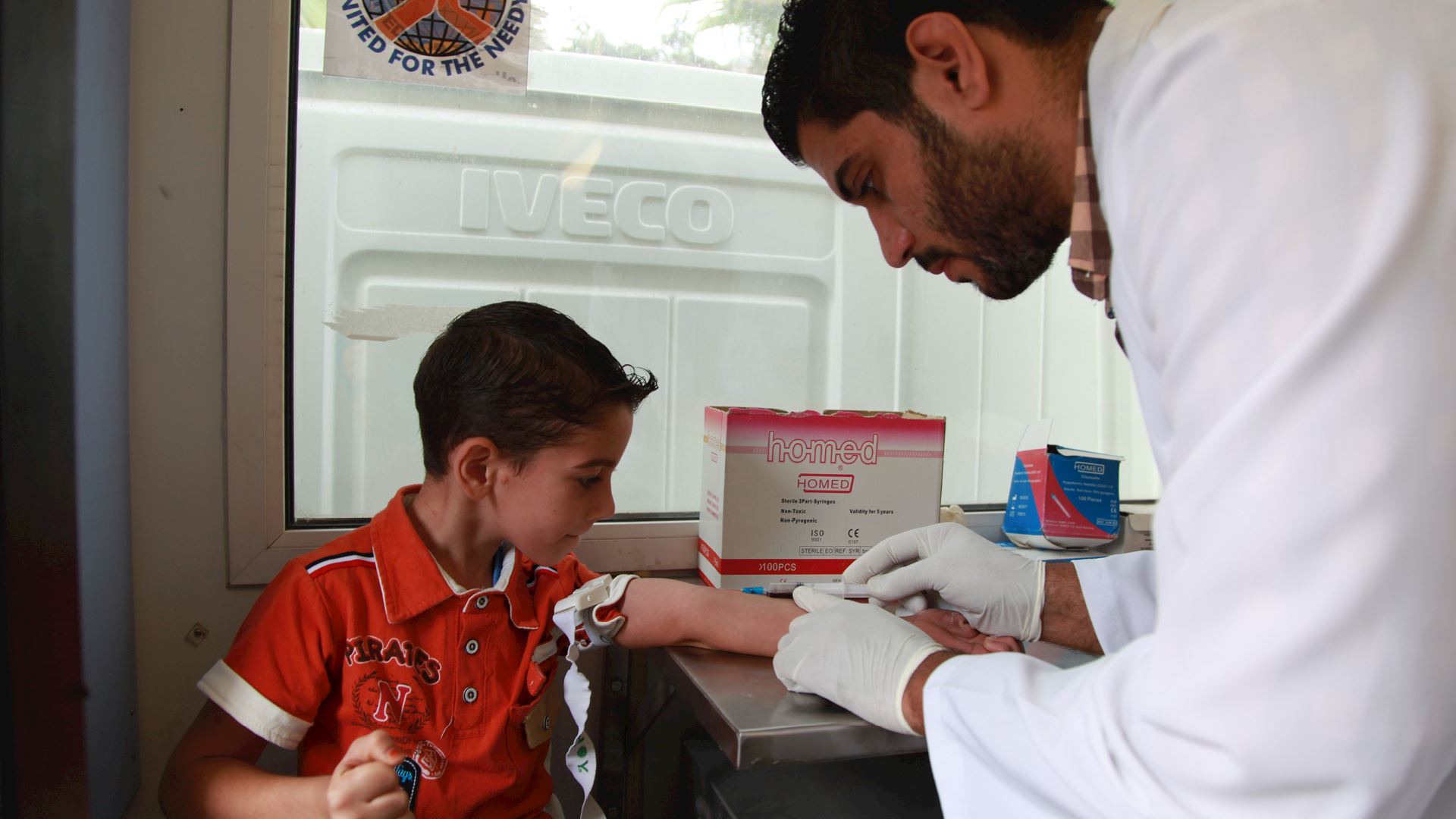
Hospitals and medical centres are also suffering; in the past, they have been forced to suspend services due to lack of power. While healthcare is always an essential service, it is particularly important today, with the ongoing bombardment and pandemic, and it is incredible that in this day and age people are unable to access it due to electricity not being available.
Power outages also continue to undermine Gaza's fragile economy, especially the manufacturing and agriculture sectors [UNRWA]. This is the perfect example of how damage to one sector impacts multiple areas, contributing to a humanitarian crisis at every level of living.
5. Healthcare in Gaza
Regarding the healthcare sector, Gaza is suffering in three main ways:
Firstly, hospitals and medical centres are overstretched. They have been struggling to contain the coronavirus, and although case numbers had been subsiding, 2,725 new cases were reported in Gaza in the week prior to the escalation [WHO]. Meanwhile, less than 2% of the population have been vaccinated, and a few days ago, an airstrike damaged the only coronavirus testing facility in Gaza, meaning it is temporarily not functioning. There are serious concerns that protests and displacement are increasing the risk of coronavirus spreading. Moreover, the health system is being burdened by a significant influx of trauma patients due to the ongoing bombardment, and staff and facilities are overwhelmed.
Secondly, health services are also under attack as part of the ongoing conflict. Since mid-April, 47 incidents of attacks on the sector have been recorded in the Gaza Strip, East Jerusalem and the West Bank. Across these areas, 37 health workers were injured and 11 health vehicles were damaged, detained or confiscated. At least one health facility was damaged in Gaza, putting further strain on an already overwhelmed system. [WHO]
Thirdly, Gaza is suffering from a lack of medicines and medical supplies and equipment.
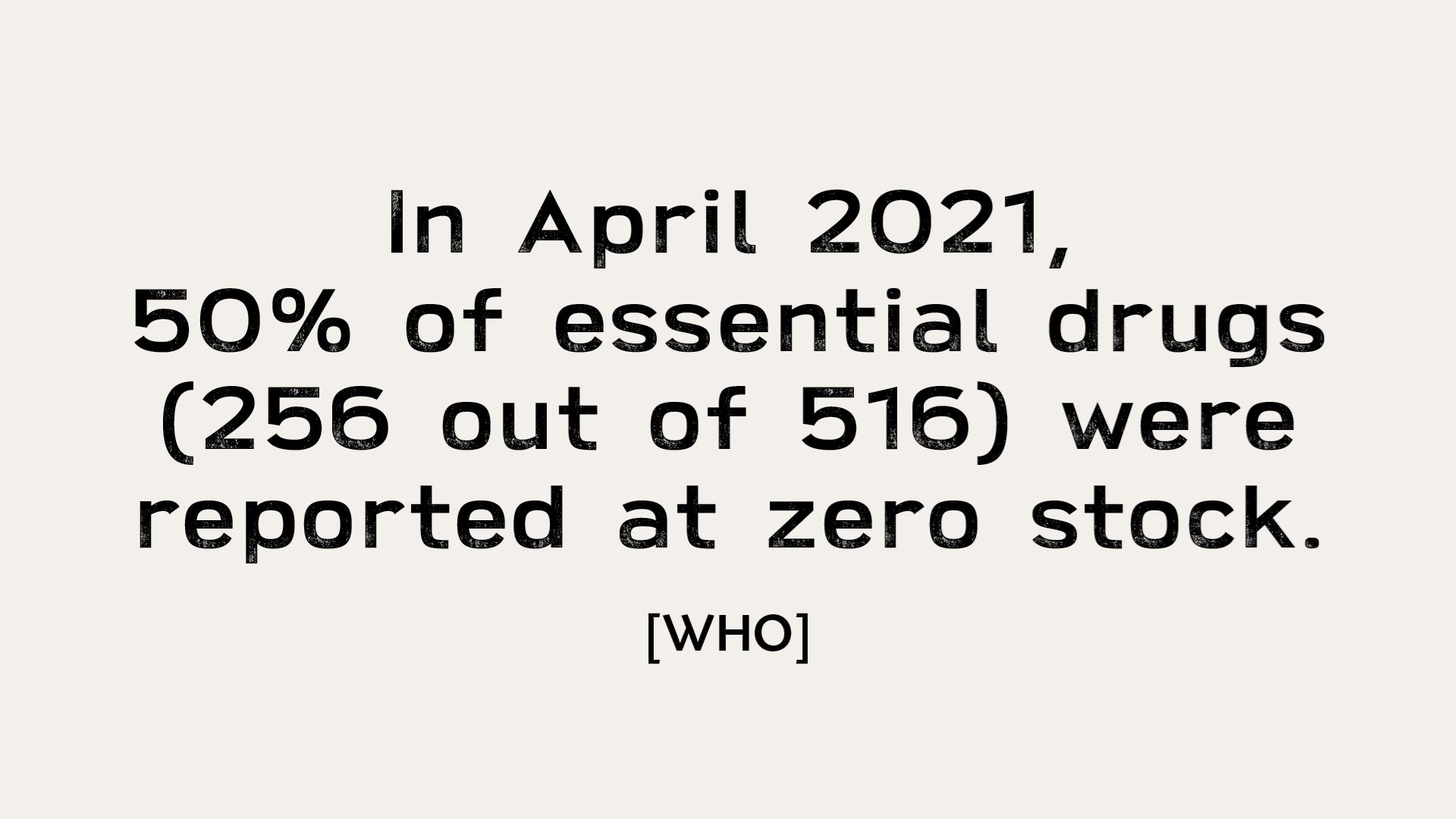
Moreover, 30% of medical disposable items were also at zero stock. The closure of the Tel Aviv airport is also impeding delivery of supplies, which were already restricted due to the 15-year blockade. However, people with health problems are unable to leave Gaza to access essential care elsewhere, since exit passes are severely restricted.
In short, if a person in Gaza manages to get to an undamaged hospital, they will be facing a massive shortage of resources and will potentially be unable to access life-saving care, whether they are suffering from injury, coronavirus or another illness.
6. The current crisis in Gaza
In May 2021, in the last days of Ramadan and over the Eid al-Fitr celebration, a devastating bombardment began. So far, over 200 people in Gaza have been killed, including at least 59 children, and over 1,300 have been injured. [BBC]
As we have seen, the current crisis is taking place in a region which is already suffering from instability and wide-reaching humanitarian problems. Food, water, healthcare, electricity, livelihoods - there is literally no aspect of life in Gaza that isn't in need of serious humanitarian assistance.
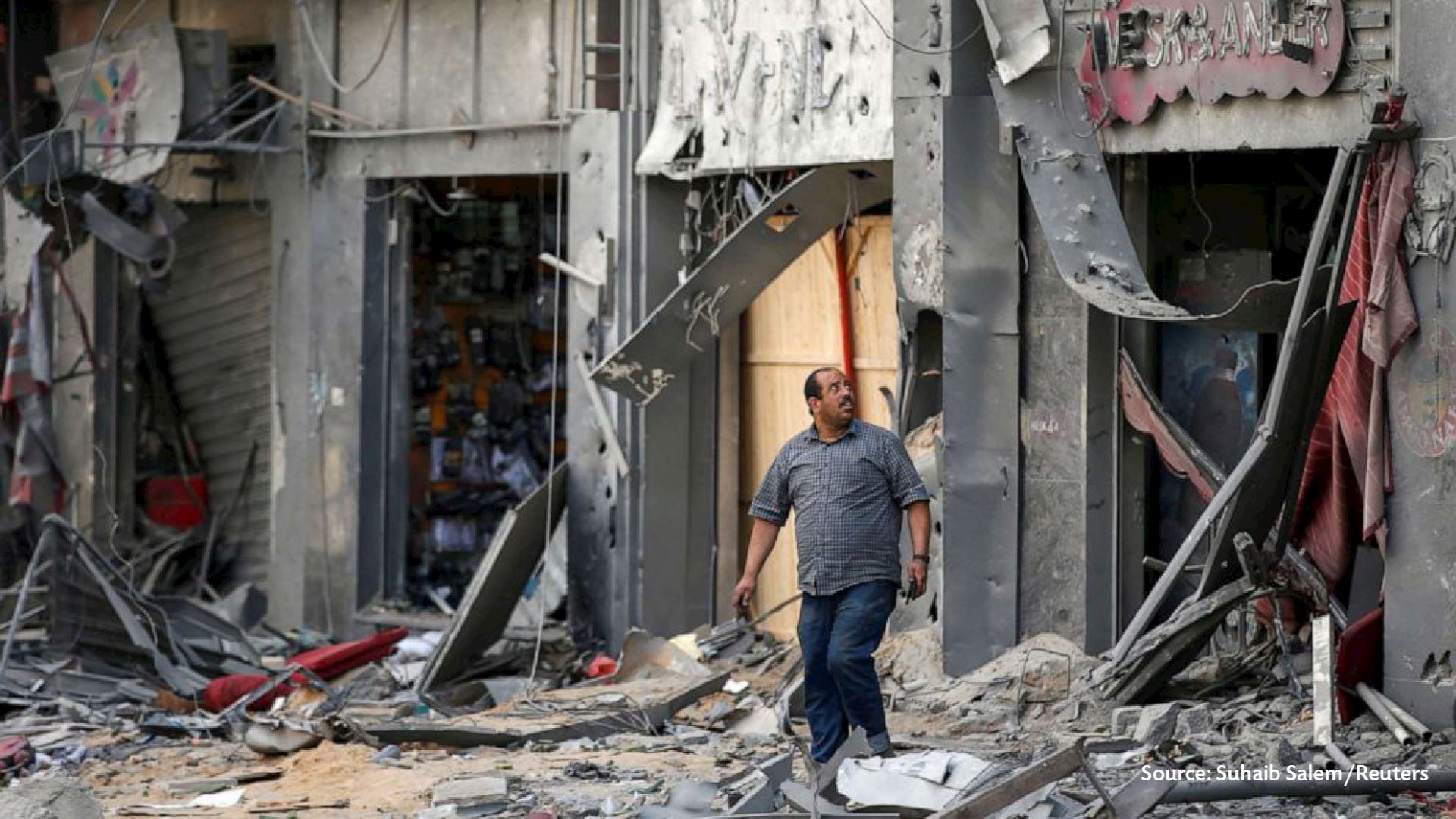
Due to the recent escalation, more than 38,000 people in the Gaza Strip are internally displaced, fleeing airstrikes to seek shelter in schools, masjids and elsewhere. This in the midst of the ongoing pandemic, when they have limited access to water, food, hygiene and medical care [OCHA]. More people are being injured and killed daily, including children.
This crisis is the worst Gaza has seen since 2014, which caused catastrophic loss and destruction, the consequences of which are being felt to this day. Physical infrastructure, including power plants, hospitals and schools, were either destroyed or disabled, which has left many Gazans without resources during the current bombardment.
7. How can you help?
Muslim Hands has been working in Palestine since 2007, providing medical care, food, education, shelter and livelihoods support to families across Gaza and the West Bank.
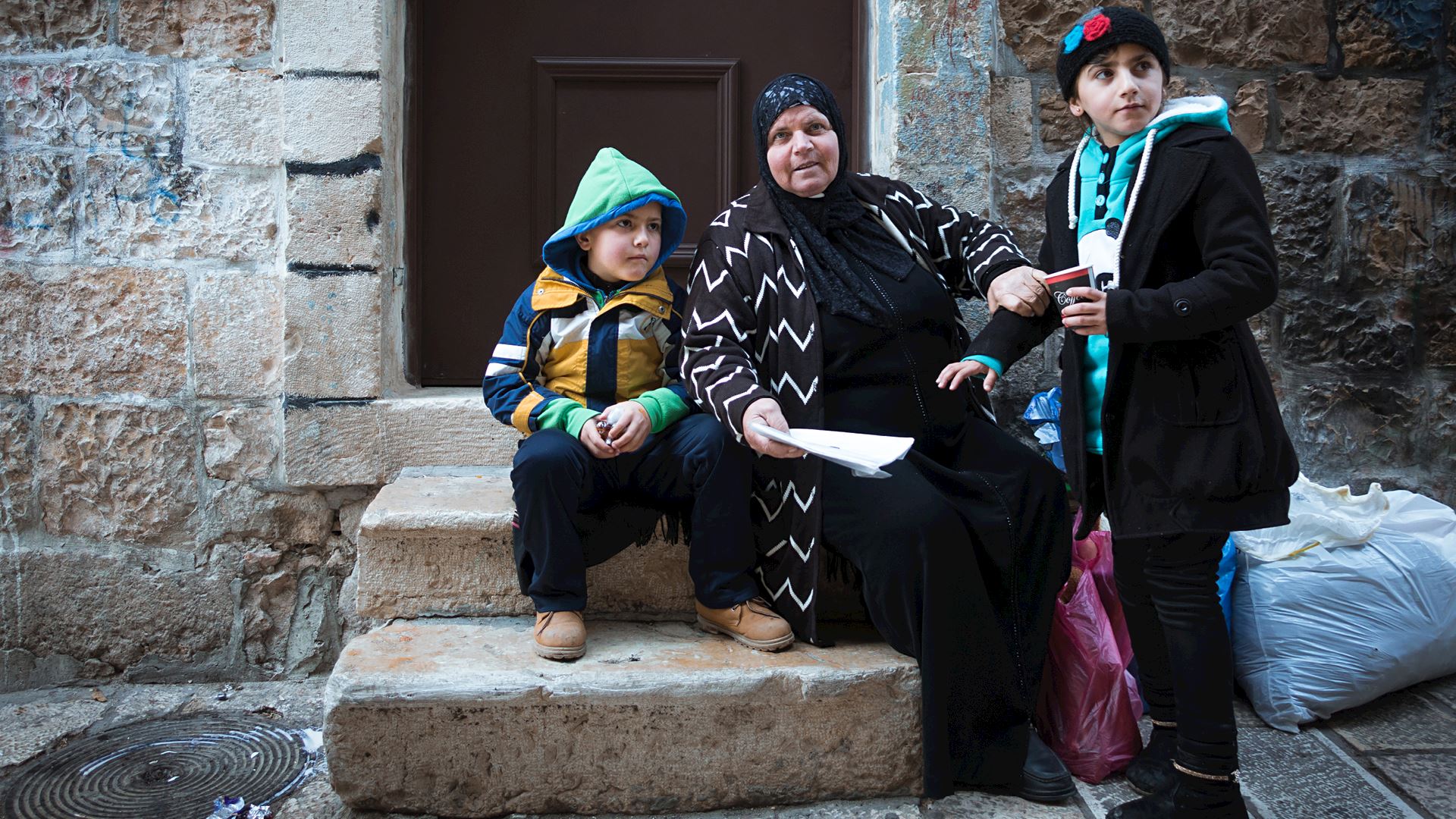
Through our partner on the ground, we are currently providing food and emergency medical care to families in Gaza, helping them cope with the devastating crisis. We are also distributing cash to families so they can buy essentials for themselves, as well as repairing damaged homes in Gaza.
Here are two ways you can help:
- Give to the Gaza Fund. This will directly help our partner provide emergency relief to vulnerable families. You can even set up a regular monthly donation, to support the people of Gaza in the long-term.
- Join the Snowdon Challenge, so you can raise both awareness and funds for the people of Gaza, ensuring their suffering is not forgotten.
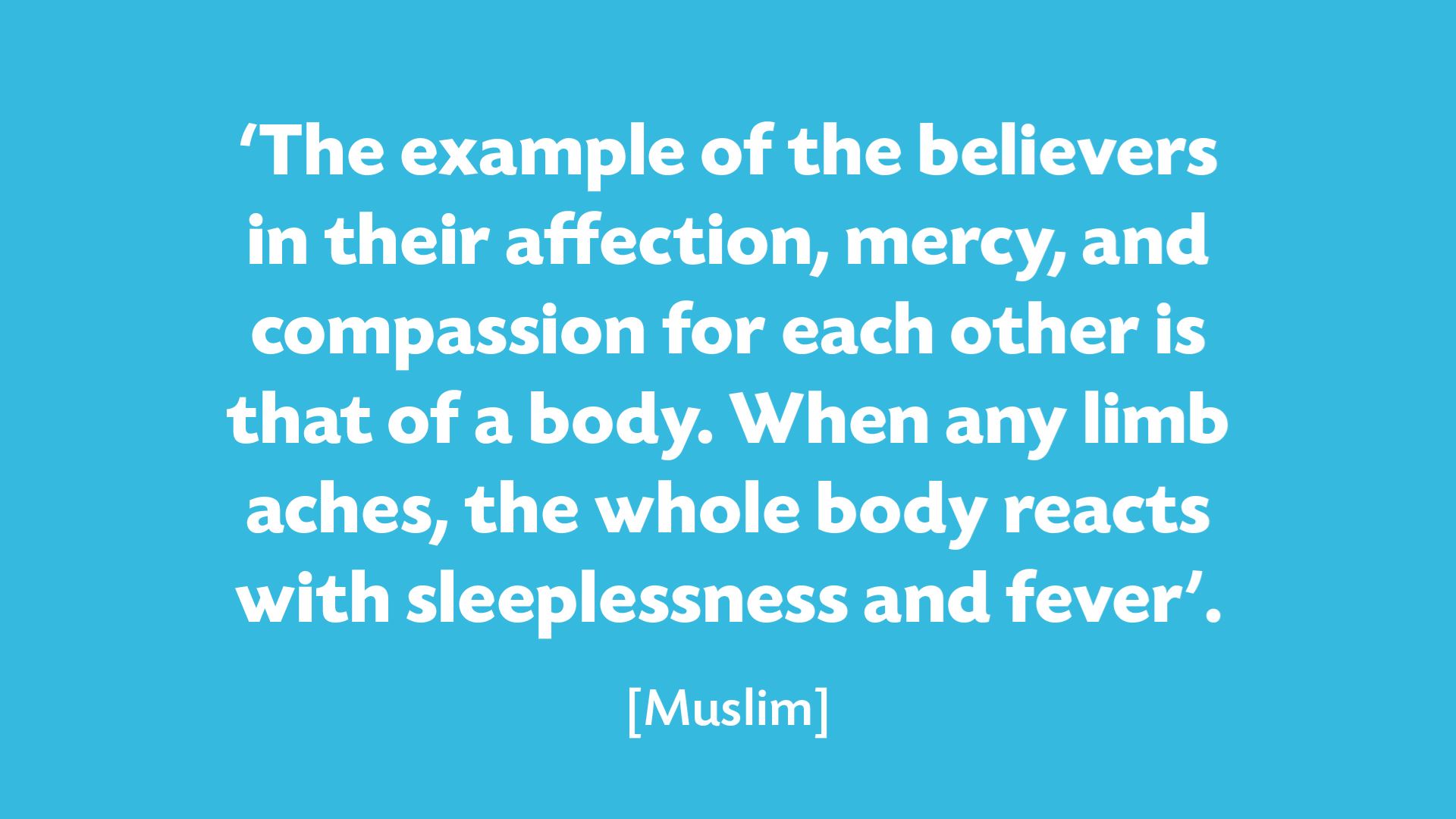
Don’t leave the people of Gaza alone in their of need. These are the people whom the Prophet (saw) called the 'best servants' of Allah (swt) [Abu Dawud] - they are the caretakers of Masjid Al-Aqsa and the elite of this Ummah! Give now to alleviate the suffering of our brothers and sisters.





